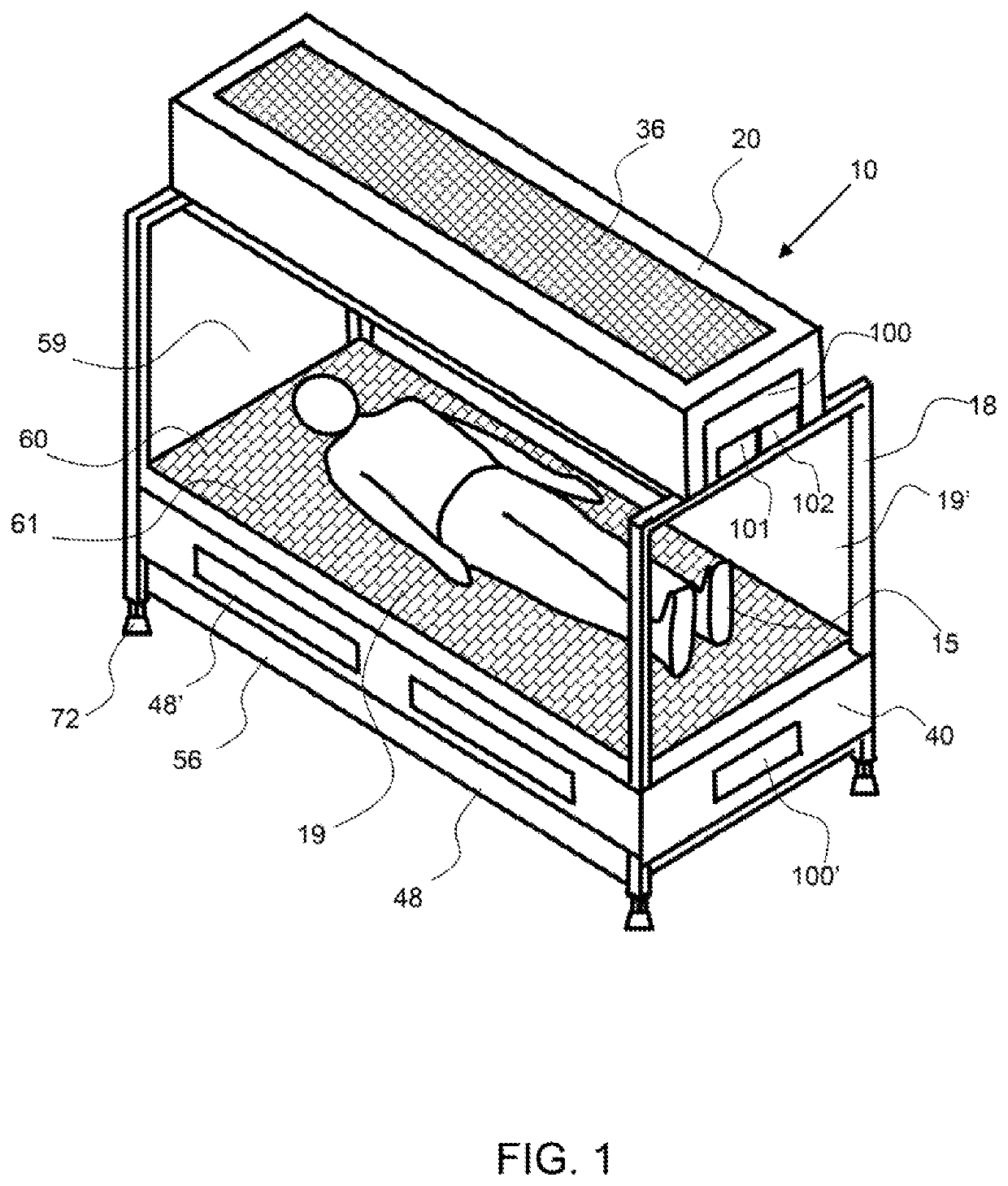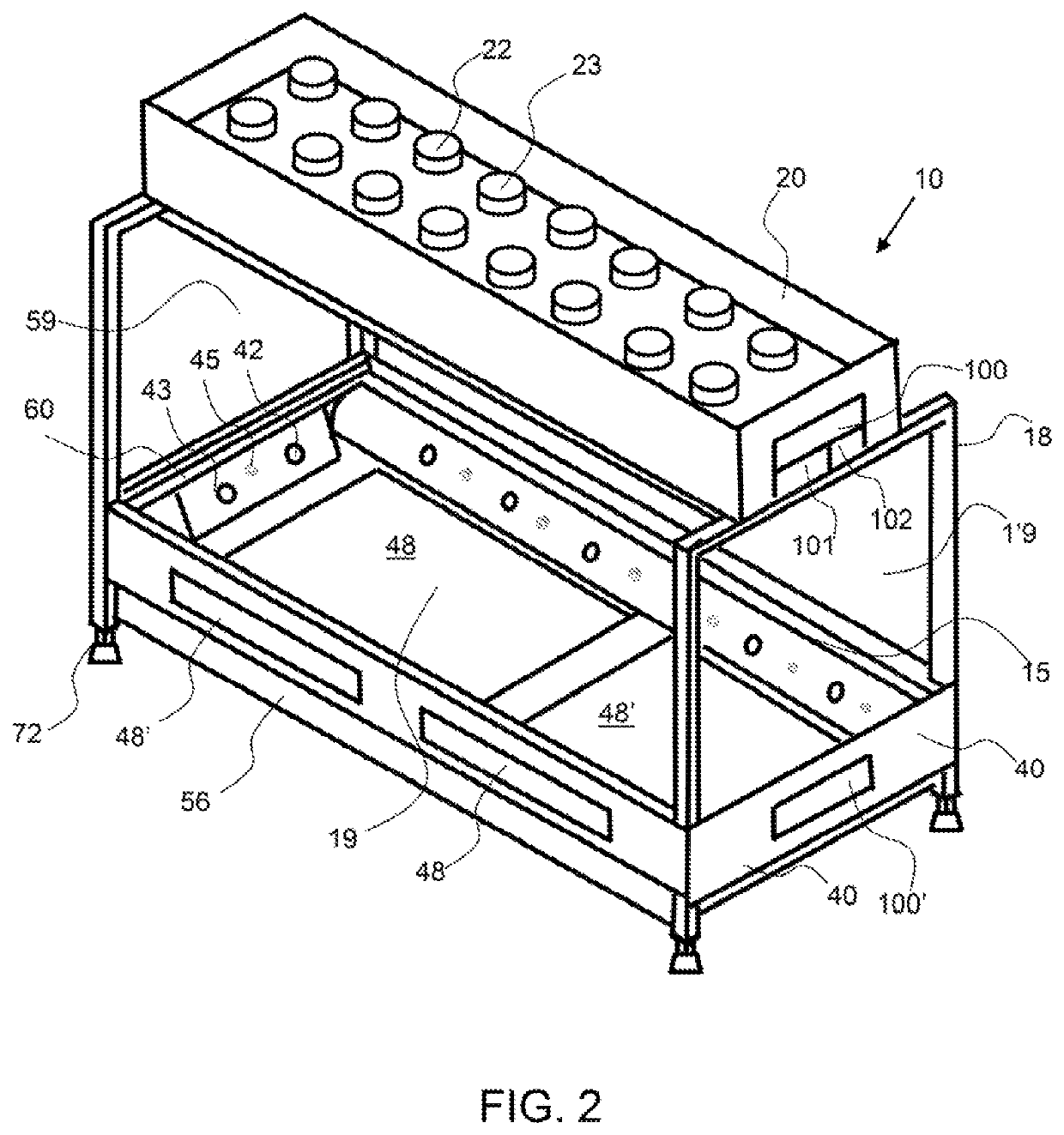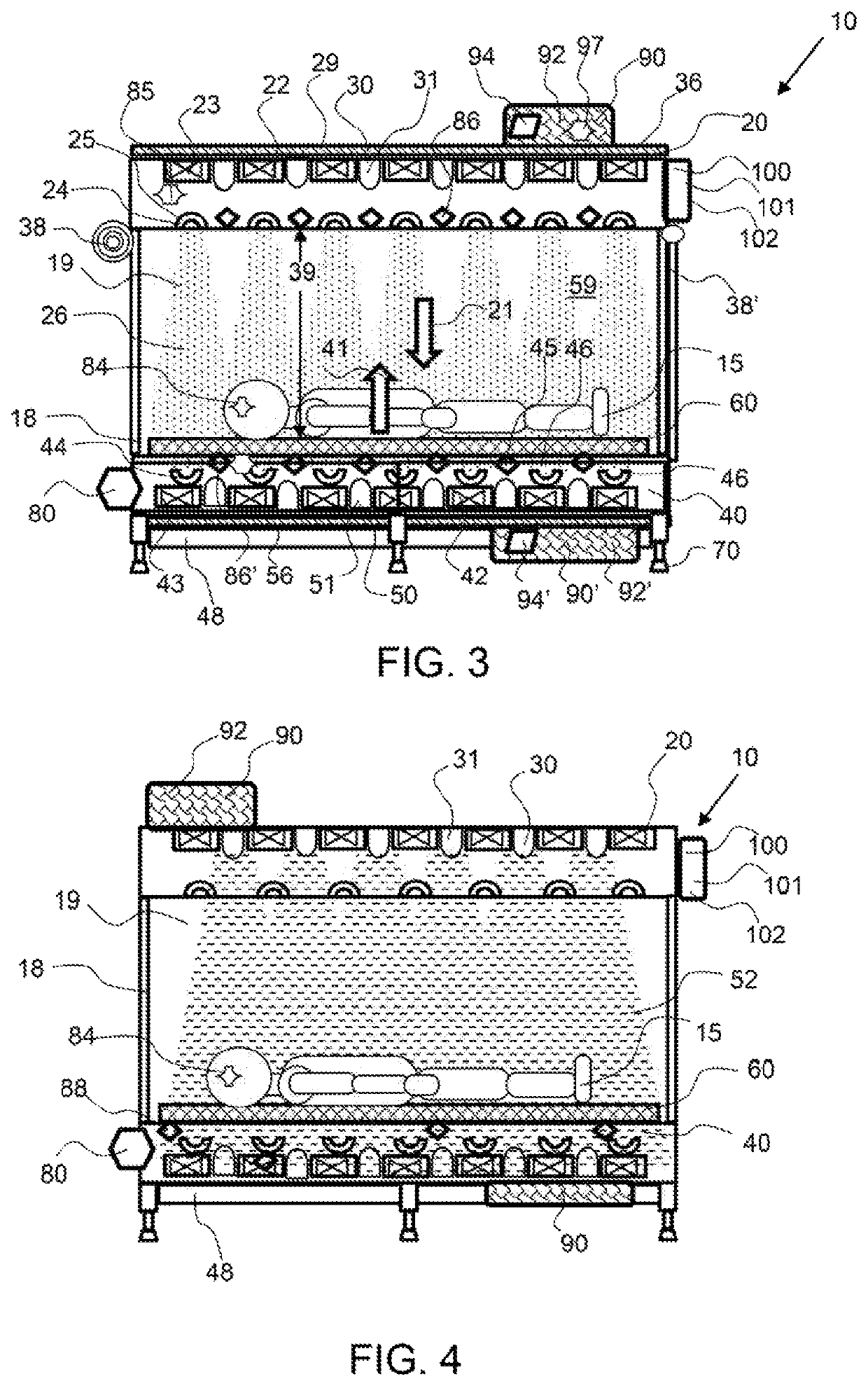[0007]An exemplary cooling system has an upper and a lower cooling portion that each have an air moving device. A filter or filters may be used to remove contaminates from the incoming airflow into the cooling bed system. The filters may be HEPA or ULPA rated to ensure that the airflow over the patient is clean and will not lead to infection. An air filter or air filtration system may be configured to be HEPA efficient thereby removing 99.7% of 0.3 μm or, larger particles, or ULPA efficient removing 99.999% of 0.1 μm or larger particles from the inlet air flow. In an exemplary embodiment, the air filter removes at least 99.95% of 0.3 μm or larger particles from the inlet air. In addition, an air temperature control device may adjust and control the temperature of the air, wherein the air is cooled or heated as required for effective and safe cooling of the patient. The airflow created by the upper and / or lower cooling portions may be laminar airflow the produces a controlled rate of cooling of the patient. In addition, the air moving devices, such as fans, of the lower cooling portion may be configured around the perimeter of the lower cooling portion to allow mist and bodily fluids to collect in drawers for easy cleaning.
[0008]An exemplary cooling system has an upper and a lower cooling portion that each have liquid misters to dispense a mist of liquid onto the patient. The liquid may be water, such as deionized water or filtered water to prevent any contamination. In addition, a liquid may comprise a medicant, disinfectant or some material, drug, or chemical that more effectively cools the patient or treats the patient. A medicant for a burn victim may include some disinfecting properties to prevent infection of their burns. A liquid may comprise a disinfectant, for example. A liquid reservoir may be used to store the liquid and conduits may extend from the liquid reservoir to the misters. A liquid temperature controller may be used to adjust and regulate the temperature of the liquid. In some cases, the liquid may need to be heated to ensure that the patient is not cooled too rapidly and in other cases the liquid may be cooled to provide a faster rate of patient cooling. The misters may dispense mist substantially over the patient, wherein at least 90% of the patient's body is exposed to mist. Again, a mist may be dispensed down from the upper cooling portion as well as up from the lower cooling portion. The misters on the lower cooling portion may be configured around the perimeter of the lower portion to allow liquid to collet in drawers for easy removal and cleaning.
[0010]The upper cooling portion is offset vertically from the lower cooling portion by the frame and the gap therebetween provides an opening in the frame that allows a patient to be easily placed into and removed from the cooling bed assembly. In addition, the openings in the frame allows a caregiver to administer fluids, such as intravenously and check on the patient. The gap distance may be adjusted wherein the upper cooling portion can be lowered down along the frame to reduce the gap distance. This may be done after a patient is placed within the enclosure area on the platform. The gap distance may be reduced to about 30 cm or more, about 40 cm or more, or 50 cm or more and any range between and including the reduced gap distances provided. One or more curtains may be configured to close an opening in the, frame and to prevent or reduce ambient air from entering the enclosure area. Curtains may allow the airflow to be maintained without the influence of external airflow such as from wind or HVAC systems. The cooling bed system may maintain a positive pressure within the enclosure area from the airflow produced, by the air moving devices. As a result of this positive pressure, any openings in the enclosure will have airflow moving out from the enclosure, not into the enclosure. One of more of the curtains may roll up and down or slide up and down to allow entry into the cooling bed system and may be automatic having motor to actuate the curtain, for example.
[0011]The frame may be made out of a material that is resistant to water and / or liquid corrosion and may be stainless steel for example. The frame may have feet that are adjustable in height to enable easier access and location of a patient therein. In addition, the frame may be configured with wheels to allow the cooling bed system to be transported to a desired treatment location. An exemplary cooling bed system is powered by batteries or some other portable power generating device including, but not limited to, a generator, a fuel cell, a solar cell, and the like, thereby making the cooling bed system truly mobile.
 Login to View More
Login to View More 


